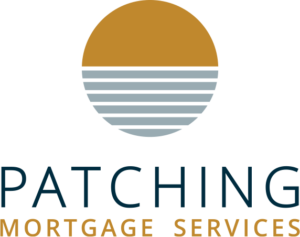Securing a mortgage can seem daunting. There are many variables, charges, and procedures that one must go through to secure a loan in order to purchase a property. Heck, just the thought of someone giving you hundreds of thousands of dollars can be overwhelming.
Most people’s first thought is wondering what they’d be approved for, if they have good enough credit, and if the amount they’d be approved for will be enough to purchase the property they have in their mind. And now the new guidelines set by the federal government have made it quite challenging to be approved for a mortgage. By the end of the pre-approval process many feel as though they’ve provided every piece of document attached to their name for the past 5 years. Not only is the documentation process a hassle, one may also be overloaded with information about mortgage options, what’s the best rate, and mortgage product. Most people consider the lowest interest rate, the best mortgage product because its an easy way to judge the product. It’s a common conversation starter, “what rate did you get?” This article was written to prove to potential or current mortgage holders that it’s not always about rate. The two examples below will describe two normal situations where the lowest rate is not the better choise, and hopefully I can prove that one must consider more than rate when choosing a mortgage product. Yes, a low rate is important, but what you give up or potentially make yourself vulnerable to may not be worth the $5-$10 savings per month.
The Case of the Mortgage Penalty
Lets assume that this Client is a regular person. Great job, solid credit, down payment came from his own sources, and is ready to purchase a home. He receives two offers for a mortgage, both at the best rate of the day. He chooses Option A through his home bank as he likes the ‘security’ of bricks and mortar location, and is familiar with using their services. Fun fact – the average mortgage holder changes something about their mortgage every 3.5 years. So let’s skip ahead to 3 years later. Sadly the client is separating from his partner, and needs to payout the mortgage. Had he thought to ask he would have known that the penalty is calculated very differently from lender to lender, and could have saved himself thousands of dollars. Please note that this information is readily available online, and in order to keep yourself safe before signing on the dotted line, ask your Mortgage professional or Banker how the penalty is calculated.
The Case of the Self-Employed
Lets say for this example the client is a Tradesman who has saved up 15% to put down on a home, but needs to state his income given that he cannot verify it traditionally. His first option takes him to a mainstream lender who has to go through the mortgage insurer. His second option takes him to a B lender who will not through the insurer, but charges a higher rate and a fee.
Let’s assume a mortgage amount of $250,000
Lender A – Rate is 2.79% for a 2 year term and the mortgage insurance fee is 3.75%
Lender B- Rate is 4.89% and the lender fee is 1%
It seems like a simple choice until you realize that the difference between the two fees is $7,235 and even though he will pay a higher amount monthly, he will actually owe $3,000.57 less at the end of the term. In this case achieving the lowest rate was NOT advantageous, and by going with option B the client did in fact save himself a good chunk of cash.
Why I’m writing this is because your mortgage is made up of far more than a rate. The onus is on you to make sure you’re getting the best overall mortgage even if you lose the water cooler bragging rights. As highlighted in the two examples above, there’s a lot of money that can be saved by making an educated choice. Be sure to lean on your Broker’s expertise to guide you through the mortgage process, and help advicse you of what the best mortgage PRODUCT is for YOU.
Best,
-D

